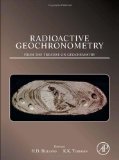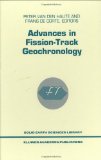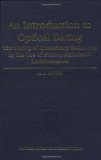Geochronology
- A K/Ar40 és Ar/39Ar geokronológia fejesztése és alkalmazása

- Advantages and disadvantages of LA-ICP-MS and ID-TIMS U-Pb dating of complex zircons: a case study of Lutzkan and Ruy granitoids in W Bulgaria

- Argon-Argon geochronology Laser Lab at the Open University, UK
- Argon Lab - New Mexico Institute of Mining and Technology
- Berkeley Geochronology Center
- Beta Analytic - World's Largest Radiocarbon Dating Service
- Detailed Geochemistry and K-Ar Geochronology of the Metamorphic Sole Rocks and Their Mafic Dykes from the Mersin Ophiolite, Southern Turkey

- Determining Age Of Rocks and Fossils
- Geochronology
- Geologic Time: Radiometric Time Scale
- GEOTOP
- High precision U-Pb zircon ages for Mesozoic igneous rocks from Hong Kong

- How Fossils Are Dated
- Institute of Precambrian Geology and Geochronology (St.Petersburg)
- K-Ar kormeghatározási módszer alkalmazása harmadidőszaki vulkáni területek geokronológiai kutatásában

- Neoproterozoic to Holocene tectonothermal evolution of the southern Cantabrian Mountains NW Iberia, revealed by apatite fission-track thermochronology

- OCR Dating Home Page
- One Hundred Years of Isotope Geochronology, and Counting

- Precision and Accuracy in Geochronology

- Radioactive Decay Systems of Geochemical Interest
- Radiocarbon dating of iron
- Radiocarbon Laboratory, University of Texas at Austin
- Radiometric Dating
- Radiometric Dating and the Geological Time Scale
- Radiometric dating of the Tertiary volcanics in Lower Silesia, Poland.II. K-Ar and palaeomagnetic data from Neogene basanites near Lądek Zdrój, Sudetes Mts

- Radiometric dating of the Tertiary volcanics in Lower Silesia, Poland. III. K-Ar and palaeomagnetic data from Early Miocene basaltic volcanics near Jawor, Fore-Sudetic Block

- Radiometric dating of the Tertiary volcanics in Lower Silesia, Poland. IV. Further K-Ar and palaeomagnetic data from Late Oligocene to Early Miocene basaltic rocksof the Fore-Sudetic Block

- Radiometric dating of the tertiary volcanics in Lower Silesia, Poland. V. K-Ar and palaeomagnetic data from Late Oligocene to Early Miocene basaltic rocks of the North-Sudetic Depression

- Radiometric dating of the Tertiary volcanics in Lower Silesia, Poland. VI. K-Ar palaeomagnetic data from basaltic rocks of the West Sudety Mountains and their northern foreland

- SHRIMP U-Pb zircon chronology of the Polish Western Outer Carpathians source areas

- SHRIMP zircon U-Pb age constraints on Neoproterozoic Quruqtagh diamictites in NW China

- Synchronizing rock clocks of Earth history

- Timing of regional deformation and development of the Moine Thrust Zone in the Scottish Caledonides: constraints from the U–Pb geochronology of alkaline intrusions

- U-Pb zircon geochronology of Central Pirin batholith

- Unravelling geologic Time
- Waikato University, Hamilton, New Zealand - Radiocarbon Dating Laboratory
- Who's On First - relative dating
- Zircon fission-track dating of granites from the Vepor-Gemer Belt (Western Carpathians): constraints for the Early Alpine exhumation history

Books about geochronology




